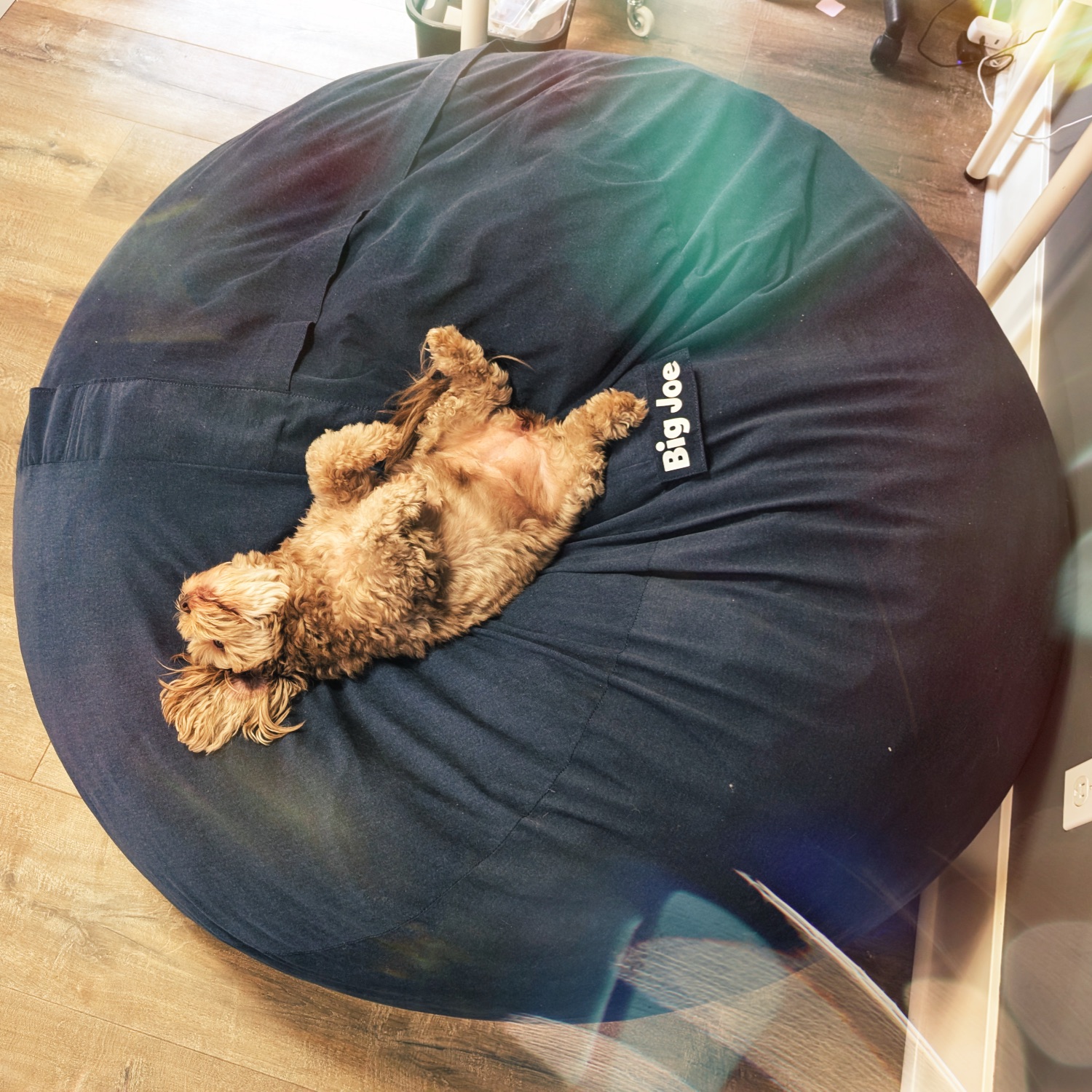
My life goal is to create a future for myself where I can be as chill as my dog Moka. 😌
(JJ Abrams filter added for extra chill effect)

My life goal is to create a future for myself where I can be as chill as my dog Moka. 😌
(JJ Abrams filter added for extra chill effect)
In July I went to see a band called Daring Greatly. My friend Chris was doing sound at the event, and he was able to secure a photo pass for me. I hadn’t heard of the band before, but leading up to the event I listened to quite a bit of their music and was impressed. Live, they’re excellent, and put on a great show; flawless musicianship, powerful vocals, and on-point harmonies. I might not be a musician any more, but I can still recognize excellence when I hear it. 👂
It had been years since I did a live concert photo shoot, but it’s something I’ve always enjoyed. And so I got to work with my then month-old Nikon Z6 III, shooting about 1600 shots (and quite a few 6K videos, which I chose not to edit). After culling the photos down to 105 shots… ⬇️
I’m proud of a few of these shots; the frame rate of the Z6 III is incredible and it allowed me to capture moments that might have otherwise slipped by. The low-light performance is excellent, and when coupled with Lightroom Classic’s AI noise reduction, high ISO shots can be made to look like low ISO shots (mostly).
I also stretched my photographer persona by taking some crowd shots; sometimes that can go sideways if someone objects to having their picture taken. Obviously it helps having a badge around your next that shows you’re not just some random guy with a camera. 😜
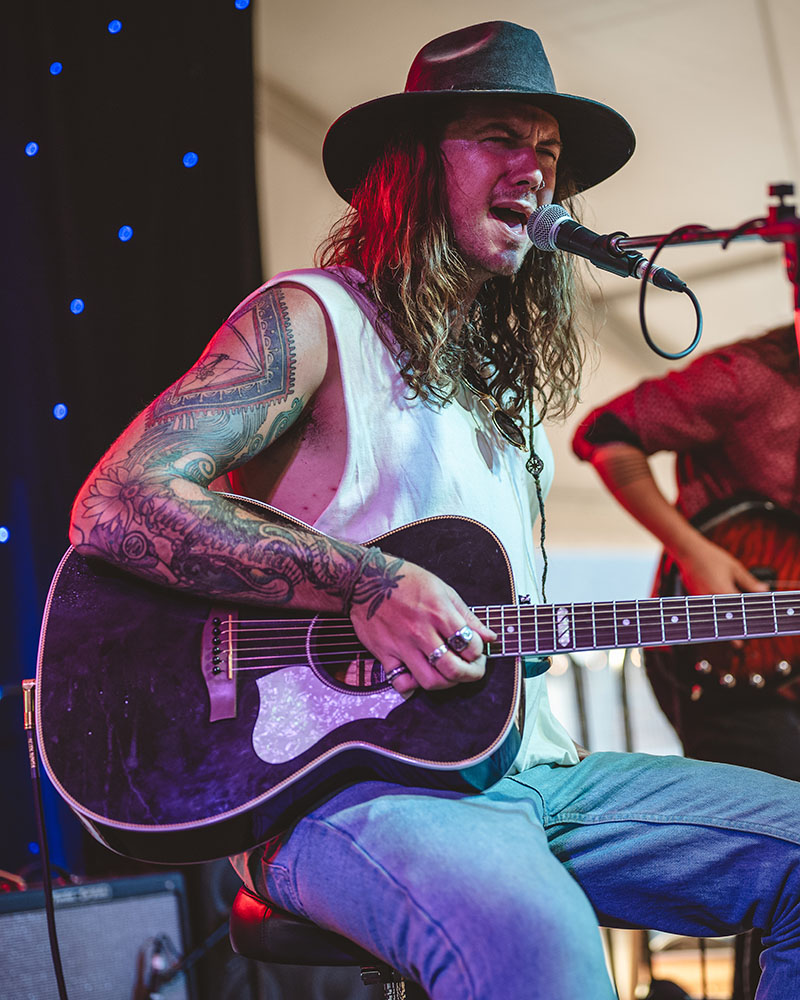
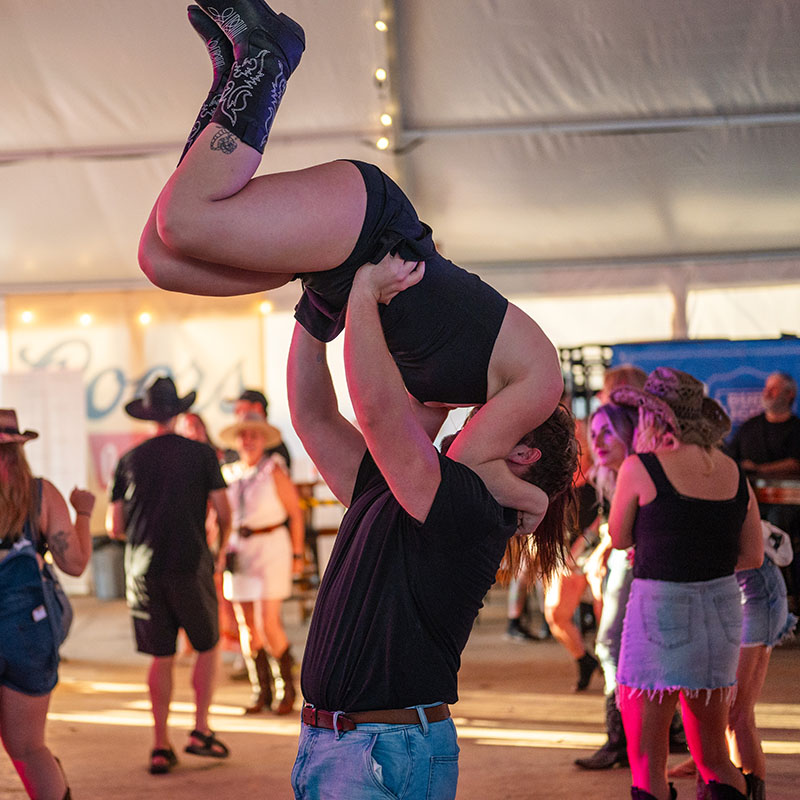
(is that ⬆️ dude strong or what? 😯)
I had the pleasure of experiencing my first Cirque du Soleil show in the state of Washington: Kooza! And I managed to take a few decent photos (and some video clips) with my Fujifilm X100VI.
The following is a lightly edited version of the most epic Thread I’ve ever posted…with the addition of that hilariously awesome Google Gemini-created image above.
After editing hundreds of photos from my recent work trips to Malaysia and Thailand (amazing countries! 🙌), all shot on my @googlepixel 9 Pro, I was reminded yet again that tiny smartphone camera sensors ultimately still kind of suck. 😕
Yes, they are computational marvels capable of amazing feats of HDR, but the image quality in anything but perfect light remains hot garbage. 🔥 🚮 I uttered the words “That would have been a great picture if it was taken on a real camera” many times. 😔 But on a work trip, taking my Nikon Z6 III is a non-starter. I try to travel carry-on and even at its smallest my beloved Z6 is a bulky beast.
I started researching options for the smallest camera that had a big sensor and met my other needs. The list was sadly short: the fujifilmx100vi and Panasonic S9. Many reviews and videos later, I decided I wanted the Fujifilm camera. The problem? It’s perhaps that most in-demand camera on the planet right now, with wait lists 6+ months long. 😢
I searched online in vain, looking at all the places I’d normally buy from (@bhphoto, Amazon, even eBay). It was either not in stock or selling for 30-50% above MSRP in “valuable bundles”. 🙄 I wanted the camera, but I didn’t want to pay a stupid amount for it.
Then I posted a silly rant to Fujifilm USA griping about their lack of stock. The Threads algorithm did its thing, and a helpful reply from John Cessna encouraged me to try local stores. I’d tried everything else, so why not? I’m in Alberta, Canada right now, so I went into Google Maps and started contacting local stores via web chat and phone. The web site of the third store, Saneal Camera, said they had one in stock. I thought it was an error, but I called anyway.
The guy on the phone said they did indeed have one. 😲 He’d updated the web site 10 minutes ago; a customer pre-ordered then backed out. I said I’d come and buy it right away. 50 minutes later, I had this beautiful box in my hands.
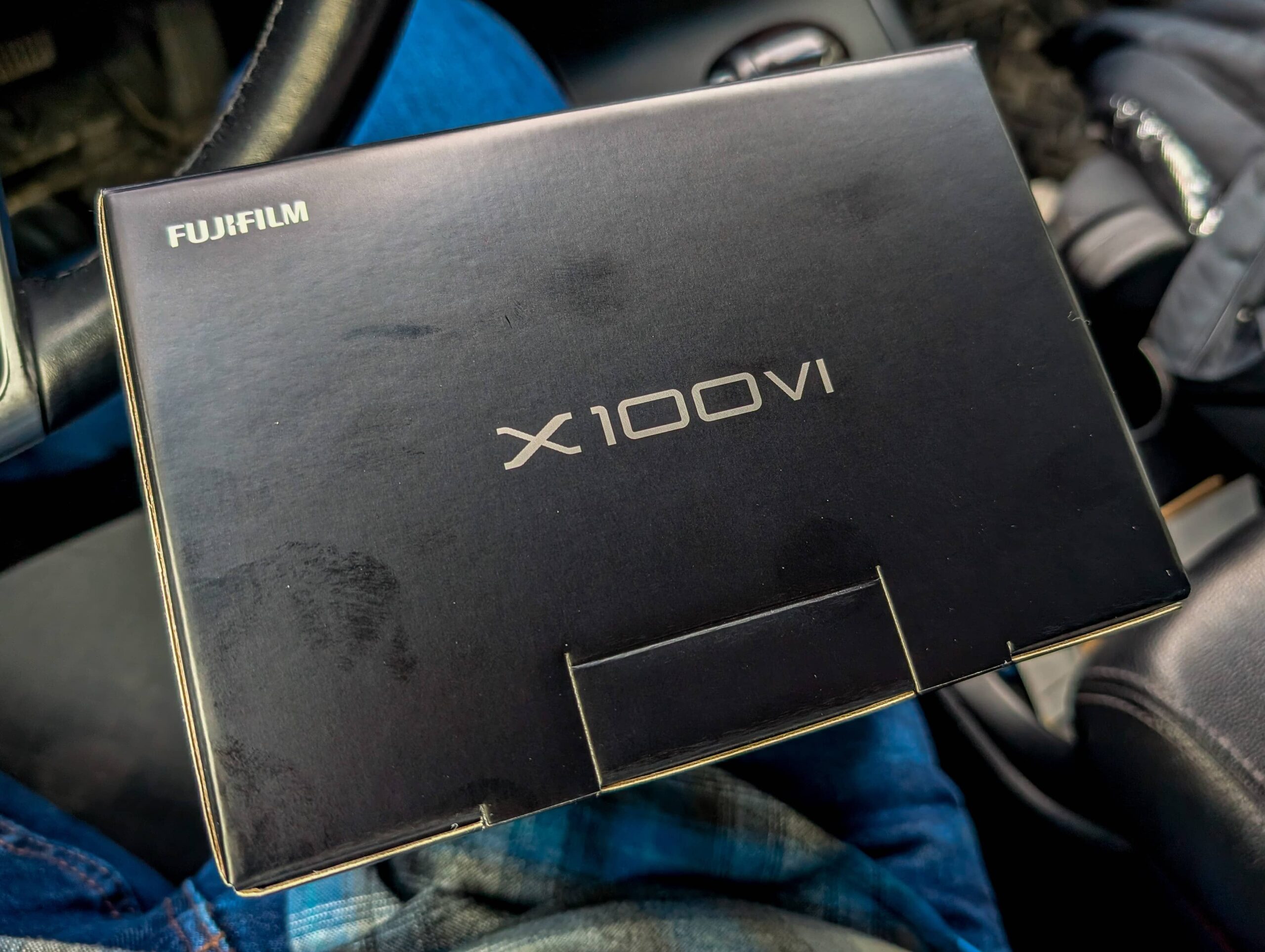
The form factor and image quality of the fujifilmx100vi make for a very compelling combination. How much smaller is the X100VI than my Nikon Z6 III? This photo says it all. I’m very excited about taking this camera with me on my next work trip.
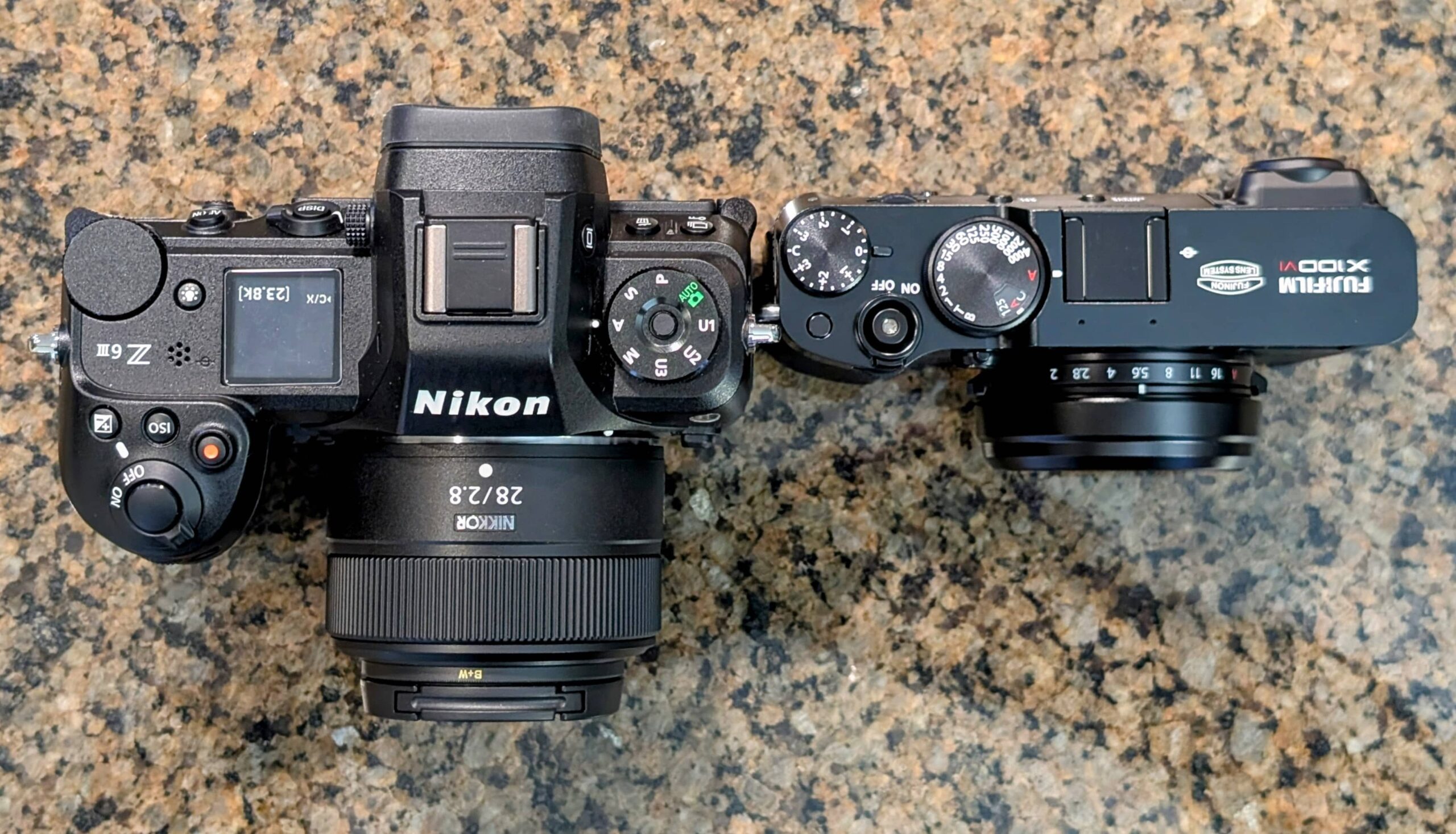
Here are a few pictures I snapped with the Fujifilm X100VI on a cold winter day in downtown High River, Alberta, Canada. 🇨🇦 Image editing done in Lightroom; I am still puzzling over whether I want to switch back to being a JPEG shooter and use in-camera LUTs, breaking free from the tyranny of raw post-production. 😂
A post for another day…
In 2018 I was in Las Vegas for an Adobe Summit — back when I was all trained up on Adobe’s suite of enterprise products — and I went to the Marvel Avengers S.T.A.T.I.O.N, a really cool interactive exhibit. I managed to get a picture of the War Machine prop armour, and because of the lighting it didn’t take much effort to black out the background entirely and turn it into a pretty cool device wallpaper.
Download War Machine wallpaper: 5K | 4K | 1080p | iPad Pro 13 | Pro 11
I wrote this email to a friend earlier this year when he asked why, when two people stand together in a photo but one stands further back, is one in focus and one a bit blurry. It’s a classic struggle for photographers who are taking candid photos. I thought the explanation/tutorial was useful enough to share here. I’m only the 28,878th photographer to write a blog post about understanding aperture, but I may be the first to use Dairy Queen Blizzard cups.
Photographers smarter than me have better explanations for how this works, but if you look at all four of these images you’ll see how aperture and distance work. The cups were about four inches apart (different focal planes). Imagine they are people to make this more relevant. 😁 Manually trying to change the focus on any of these only changes the spot the camera is focusing on, it can’t bring both into focus (because physics).
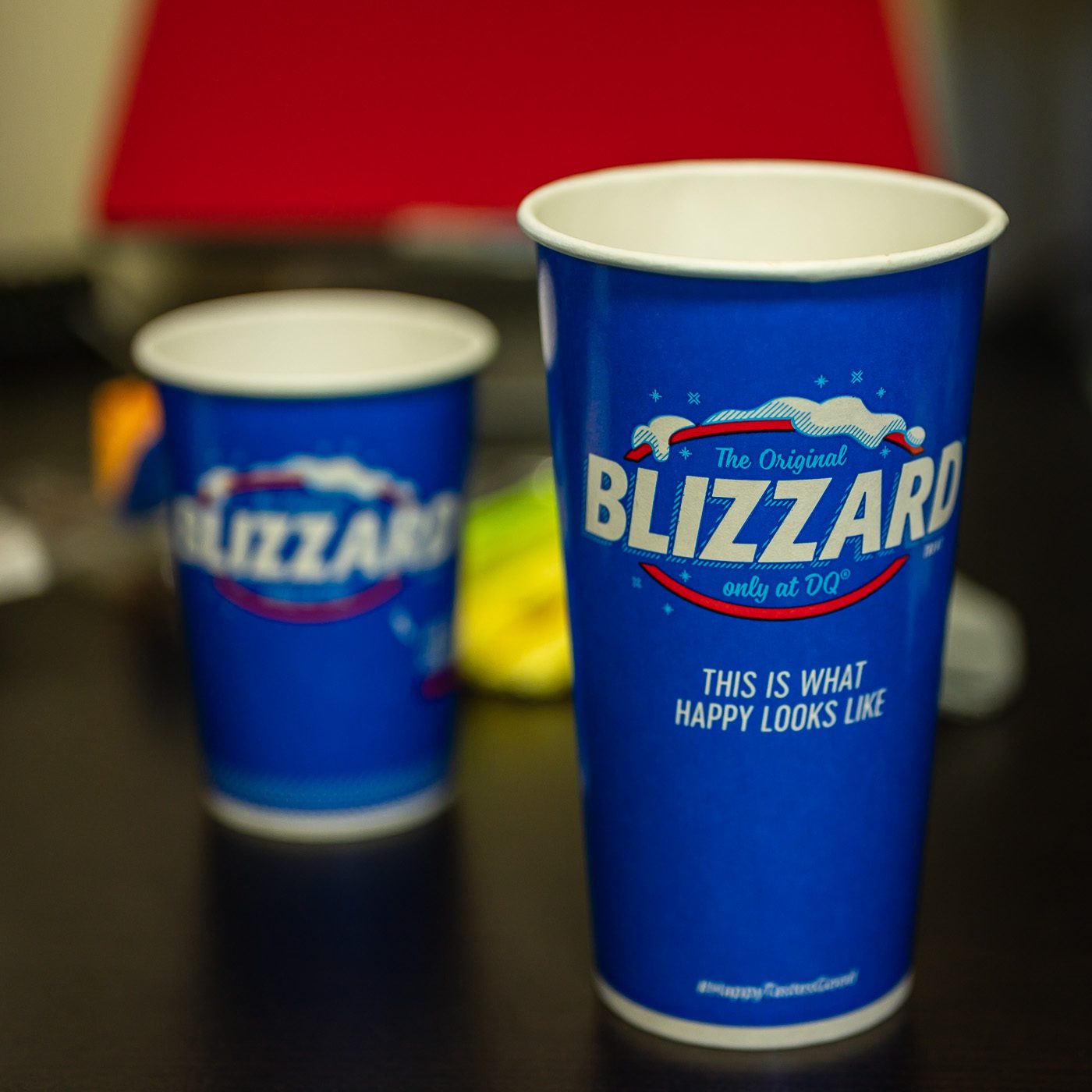
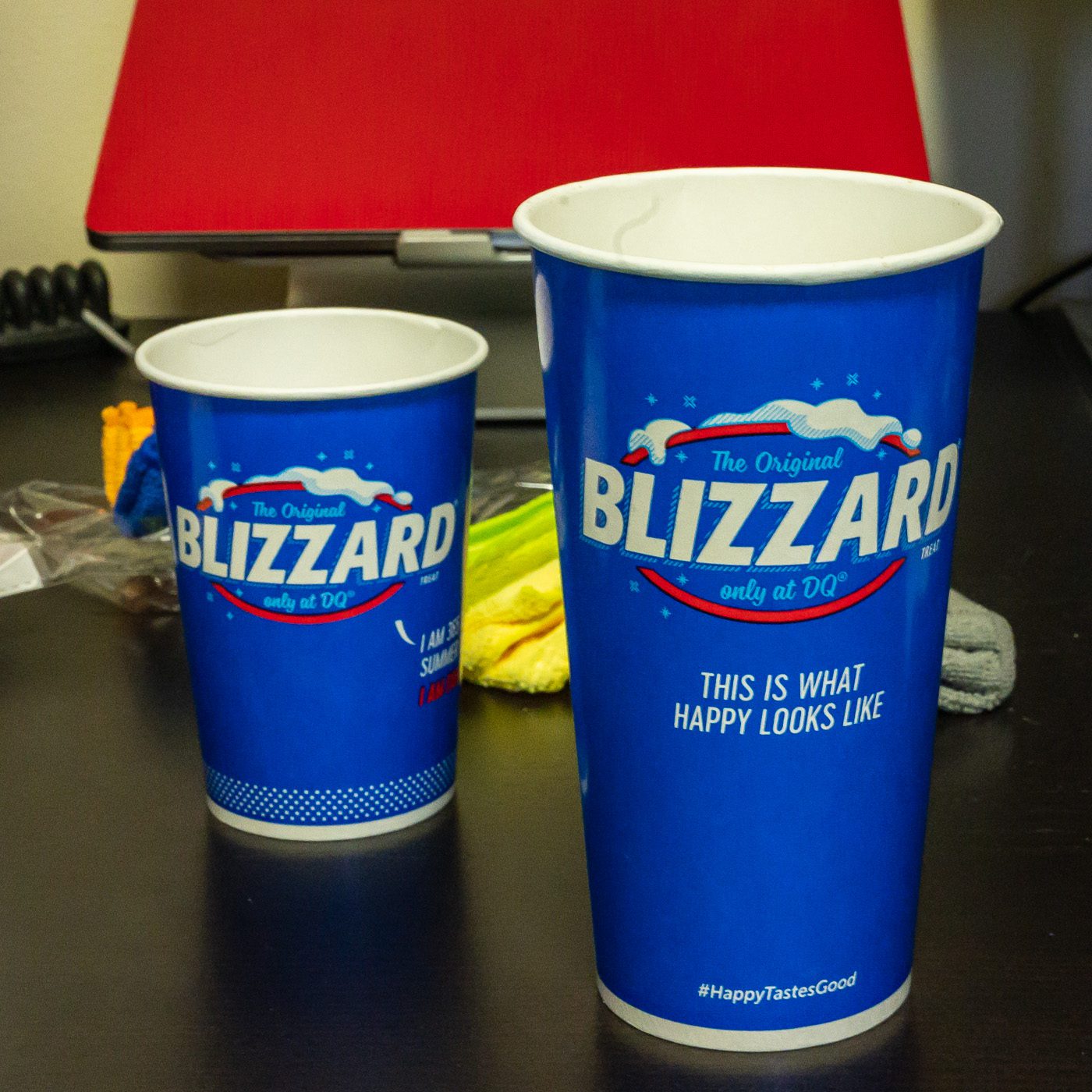
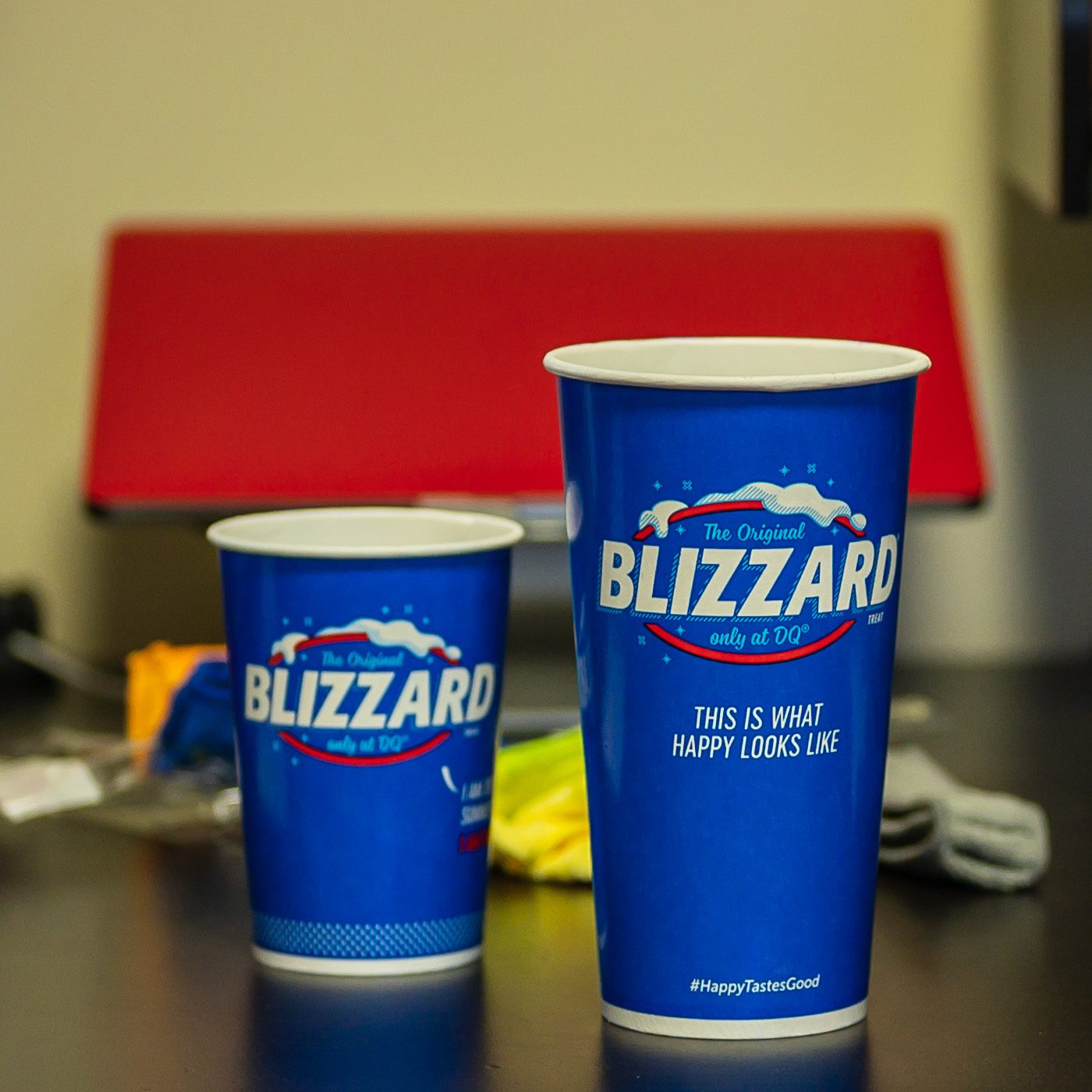
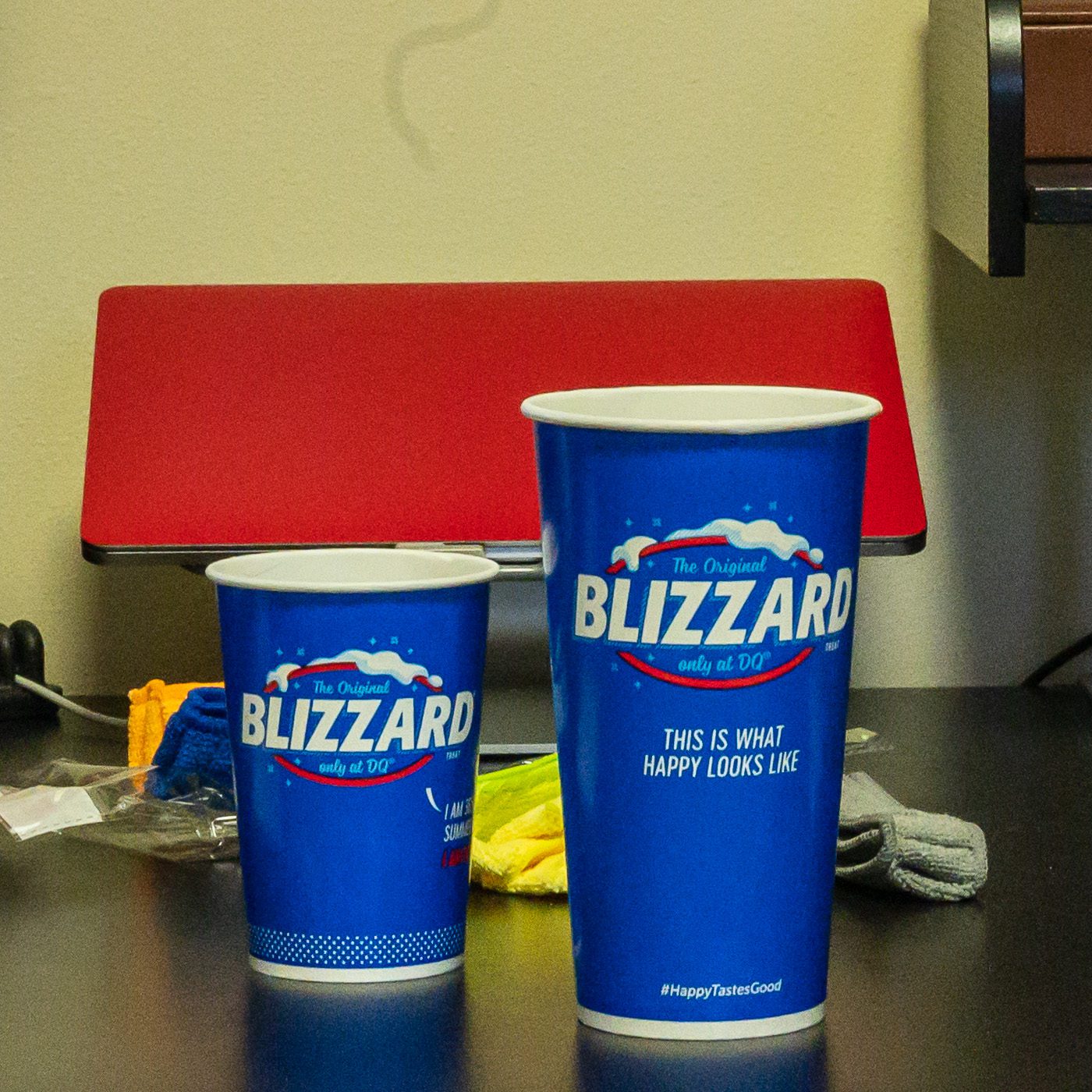
So, basically, when taking photos of groups of people that are not lined up next to each other, you should move back, switch to a higher aperture (f/8, f/12, etc.) and hope there’s enough light to make it all work.
I purchased my Nikon Z-6 in November 2019, and in hindsight I wished I’d pulled the trigger sooner. It’s had a marked improvement on my photography, namely due to the in-body image stabilization. To be blunt, it was a technology I needed for quite some time* as I usually shoot with prime lenses that lack stabilization. I was exceedingly grumpy with Nikon for not following Sony, Panasonic, and every other camera OEM’s lead (other than Canon) but I bought the non-stabilized D750 anyway. I swore though my next camera would have it. <shakes fist at sky>
This isn’t a review of the Nikon Z-6 though. What’s that? You want my review of the Z-6? It’s great, though I wish it had two memory cards slots instead of one QXD card slot. Buy it if you have an investment in Nikon lenses. If you don’t, look really hard at the Sony Alpha a7 III. I’d have probably gone with the Sony if I didn’t have my Nikkor f/2.8 lenses; I just can’t justify replacing them with equivalent Sony lenses. 💸
Continue reading Sony’s 128GB CFexpress: No Real Improvements For Still Photographers, And Yet…Last night I took my Pixel 3 XL out Halloween trick or treating with my kids and decided to see how well it handled real-world low-light conditions. This is without the forthcoming Night Sight, which by all accounts is extremely impressive. The images below are shot in regular camera mode, JPEG (I completely forgot about the raw mode option) with post-processing done in Lightroom. Lightroom noise reduction was not used on any photo. I could have posted the unretouched photos, but I always do some sort of post processing, either on my phone or on my computer, so this is real-world for me. I’ve also added some additional analysis on each photo for those that are curious, and linked to the full-sized JPEG (most are somewhat cropped, so none are original size).
The TLDR version? This Pixel 3 is the best camera I’ve ever used in a smartphone, and it has impressive optical image stabilization. It’s still a tiny sensor and subject to the same laws of physics as any other phone though, so it can’t work miracles. I’m generally impressed with how well it holds up at high ISOs that would make many phone images fall apart.
Above: this scene was quite dimly lit, despite what the adjusted image looks like, and is reasonably sharp given the camera was shooting at 1/15th of a second (which is below what I can properly hand-hold at without stabilization). It had to push to ISO 2728 though, which is why the cloth robe is noisy mush. It’s an OK picture if you don’t look too closely at the robe because other elements look decent. Continue reading Pixel 3 XL Halloween Photos
We went to Legoland in June and among the more impressive Lego creations we saw were the incredible Star Wars creations. The amount of work that went into these must have been intense. Amazing to see! Here are all of my photos from this part of Legoland.